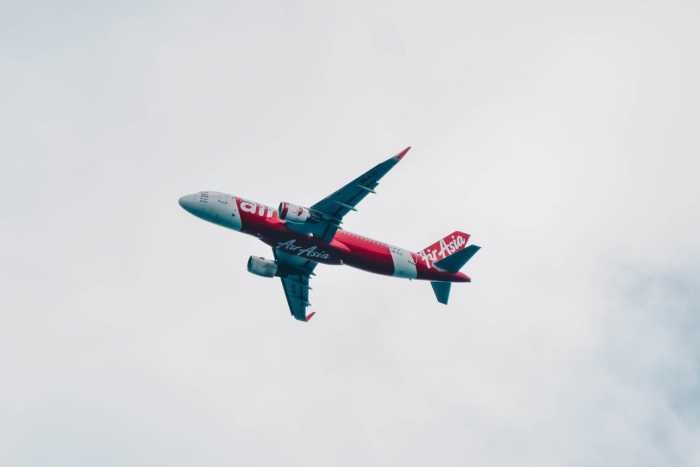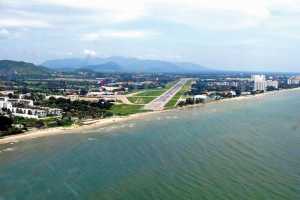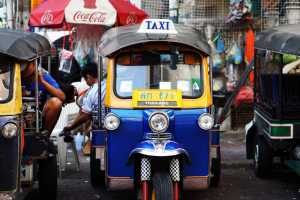
Asian Innovation
16th Jul 2010

Phuket now sits squarely in the middle of the world's largest air travel market today - and also one of the most innovative both in the air and on the ground.
Asia-Pacific overtook North America as the largest air travel market last year with 647 million passengers, compared to 638 million in North America.
Within Asia, China eclipsed Japan over the past decade as the region's largest domestic market, with 1400 aircraft, compared to Japan's 540 and 5.7 million weekly seats against 2.6 million in Japan.
The International Air Transport Association [IATA] which represents 90% of all scheduled air traffic through 230 carriers, estimates that Asia-Pacific's market will continue to grow rapidly, with an estimated 217 million additional air passengers a year in the region by 2013.
Clearly for these types of numbers will include a large number of people whose expectations of the airlines' services and products will continue to grow also, and become more sophisticated. That means competition between Asia-Pacific airlines will become even more intense.
Already we see in our own national airline, Thai Airlines International, a significant change in attitude toward services, innovation and competitive advantage as THAI faces up to ever increasing competition.
So things are happening to meet this challenge across the region. Asia-Pacific can also take a bow as, arguably, the most innovative region when it comes to new technology benefitting the passengers.
It wasn't always this way. For example, the now almost standard lie flat seat in first and business class was introduced by British Airways, who also conceived the very successful Premium Economy class, a half way house between economy and business class.
The American led the world, through Boeing, in aircraft design, particularly introduction of the first Boeing 747 Jumbo jet flights in 1970, and a plane that revolutionized air travel. Southwest Airlines of the US was, arguably, the first successful low cost carrier and remains so to this day. JetBlue, an American low cost carrier introduced virtually full service benefits when it began flying.
Now it is Asia-Pacific's turn. Here are a few examples from up in the air and on the ground:
- Suvarnabhumi Airport will be the first international gateway capable of providing CUPPS platform - the new global IT standards for passenger check-in and boarding. It will make passenger processing more cost efficient.
- Air New Zealand is to introduce ground breaking lie flat economy and premium economy seats in its new Boeing 777-300s. The 'Skycouch' in economy class is a specially designed row of three seats and has been engineered to create a lie-flat, flexible space all the way to the seat-back in front, providing place for the kids to play and a flat surface for adults to relax and sleep.
- The new Premium Economy cabin will offer uniquely designed Kiwi 'Spaceseats' with better comfort and leg room and new types of meals.
- In Japan passengers can book flights on their cellphones, even picking their seat, and then access airside for their flight by simply placing their phone on a bar code and the electronic boarding pass on your phone enables you to walk through. No paper coupons necessary. Also at the domestic Haneda Airport you can make a phone call in the All Nippon Airlines lounge inside a "space" cubical which is open, but no-one can hear you.
- At Suvarnabhumi Airport, Bangkok the Thai Airways International first class spa facility has won numerous awards presenting this uniquely Thai experience.
- AirAsia, always a leader, introduced its web check-in facility last year, enabling travelers to check-in on the web, which also enables them to pick a seat, thus avoiding long queues at the airport.
- Qantas of Australia has begun adding what are called 'slimline' seats that add an extra 3.8 cm [1.5 inches] of space, which shows how narrow the band for improvement on seating in aircraft is.
- Singapore Airlines; also a leader, partly fitted out its new Airbus A380 super-jumbo jets with 12 fully enclosed "suites" resembling Pullman cars of the early 20th Century, including fold down beds which can be a double bed. Of note in both the Qantas and Singapore Airlines cases, all the talk prior to the launch of the A380, which in theory could take 800 passengers, depending on the configuration, of showers, duty free shops, casinos and cocktail bars failed to translate into reality. Airlines need bottoms on seats to make money.
- Thai Airways International is also proving that you can be innovative and 'green' at the same time. This year on international flights THAI will introduce a 'carbon emission' meal policy whereby THAI will be the first airline in the world to serve Thai signature dishes with carbon footprint information for passengers. For example Chicken Mussaman Curry with steam Thai Hom Mali Rice has 13.6 kg CO2 emissions per 250 gram serving. Green Curry 'Kiew-Wan' with steamed rice has 13.9 kg CO2 emissions per 250kg serving.
Comfort can come in other ways. For example the long anticipated Boeing 787 "Dreamliner" due to fly this year after an embarrassing two year delay, will have a hotel lobby like entrance way, sculpted curves, very large windows and lighting that automatically changes with the journey.
The B787 will be seen in Asia-Pacific skies first once in service as All Nippon Airlines is the lead carrier with orders for 50 and the second carrier is Air New Zealand, with an initial order of two but now doubled to four.
Finally, these innovations are from established commercial airlines. The exciting thing is that both Japan and China are producing their own regional jets, which are short haul, turbofan powered aircraft that are growing quickly around the world.
But that is another story.









